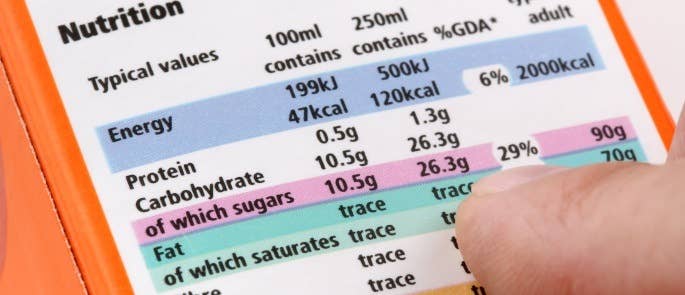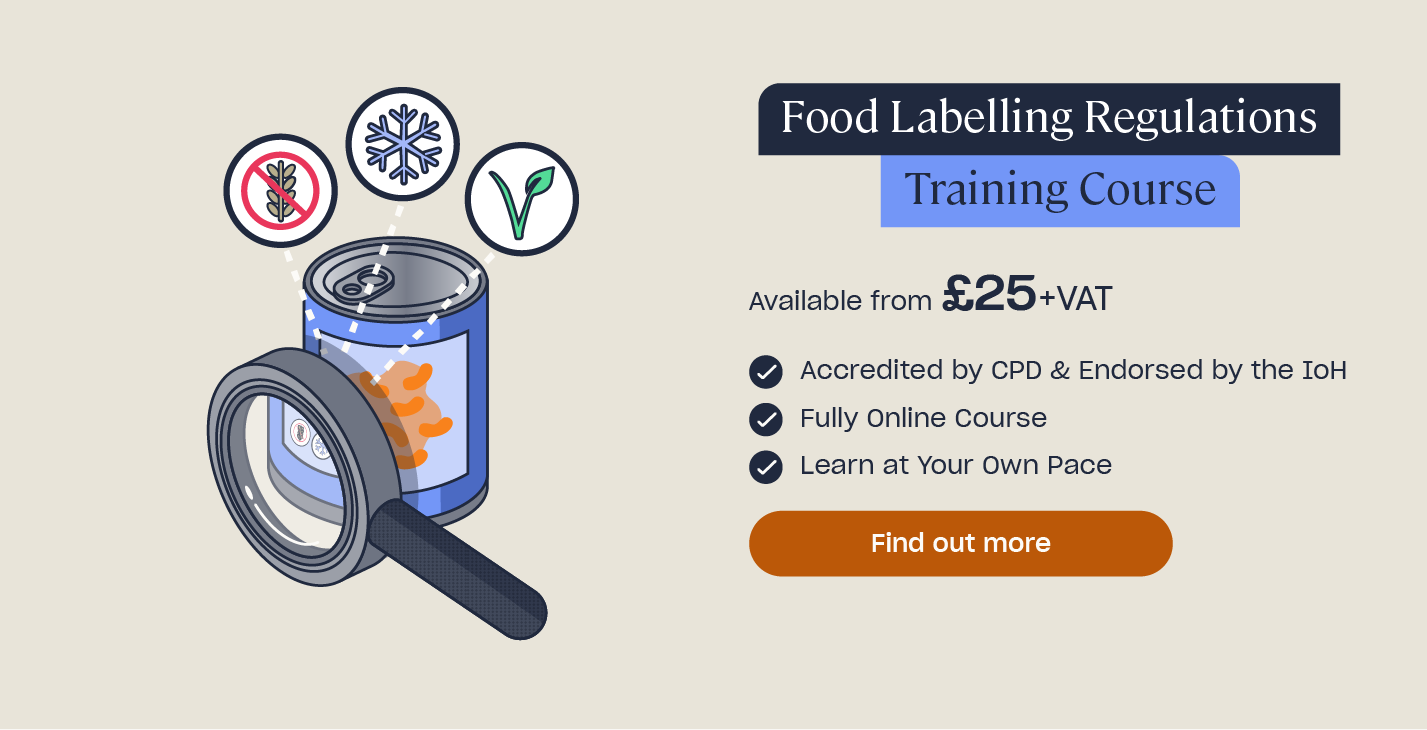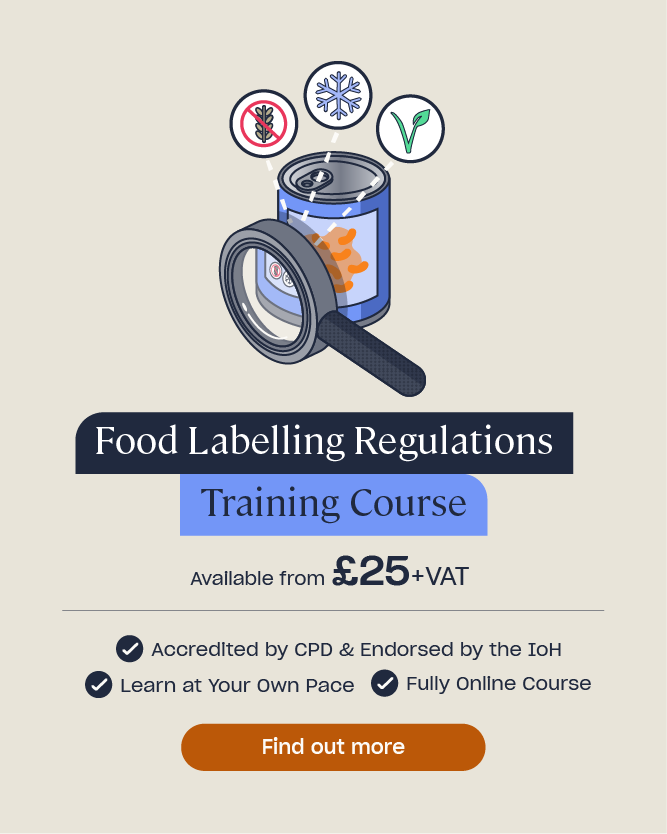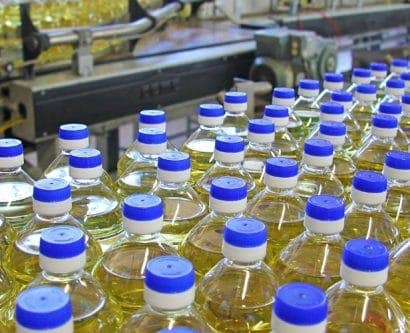Why is Food Labelling Important?
Food labelling is vital. Not only is it a legal requirement if you’re a food producer, it also helps consumers make informed decisions when purchasing food and helps them to store and use the food they’ve purchased safely.
Whether you supply restaurants or supermarkets, the requirements are the same. Therefore, it’s important you understand your responsibilities and why food packaging is important.
What are the Legal Requirements for Packaging Food?
As a food producer, you are legally required to appropriately label all your products. Failing to adhere to this can lead to severe consequences. If authorities deem you noncompliant, the first step they’ll take is give you an improvement notice, which will detail what you are doing wrong, which rules you have broken, and the steps you must take to comply and by when.
You can continue production after you receive an improvement notice, but you must take all outlined steps to bring your business into compliance within the specified timeframe. If you choose to ignore an improvement notice and are still noncompliant after the specified date, you will be committing an offence and may face prosecution.
Want to Learn More?
Our Food Labelling Regulations Course has been designed by food industry experts to help food businesses understand how to label their food products legally and correctly. It is suitable for all food businesses who package food for sale directly to the consumer.
Your pre-packaged food must include the following on its labels:
- The name of the food. This must be a true representation of your product and must not be false or misleading.
- A list of ingredients. You must use ‘Ingredients’ as the heading and list the ingredients used to make the product in descending order of weight.
- The percentage of certain ingredients. If you emphasise a certain ingredient on the packaging of your product, such as ‘Chicken Burgers’ you must state the quantity of this ingredient as a percentage in the ingredient list. For example: chicken (75%). This is also a requirement if you highlight the ingredient with a picture or graphic, such as a cartoon strawberry on the packaging of a yogurt, or if it is necessary to distinguish the product.
- Any instructions for use, such as cooking instructions if they are needed. This includes the cooking equipment, temperature, cooking time and any other specific instructions needed to prepare the food.
- ‘Use by’ or ‘best before’ dates. By putting these dates on your products, you will help customers store and use your food safely, as well as reduce food waste.
- Storage instructions. These instructions help your consumers safely store products before and after opening the packaging, which will ensure they remain safe to consume. For example: ‘Store in a cool, dry place. Once opened, refrigerate and consume within 3 days.’
- Contact details. Include the country of your business, the name of your business and a contact address.
- Country of origin or provenance. You must not imply your product originates from where is was manufactured if you sourced it from somewhere else. For example, if the tuna used in your product was fished in Canada, shipped to the UK and produced into a pre-packaged meal, you cannot say it is British tuna.
For more information on the legal requirements for food packaging, have a look at our article on the Food Labelling Regulations 2018.

Importance of Food Labels
Food labels are a legal requirement and they are important for many reasons. They help consumers make informed choices about the food they buy, help them to store and use it safely and allows people to plan when they will consume it – all of which help to reduce food wastage.
The rest of this article will explain why the label requirements are important and how they help consumers to choose their goods.
Nutrition/Dietary Advice
Since 2016, it has been a legal requirement for food production companies to display nutritional information on the back of all pre-packaged food. As well as ensure you fulfil your legal responsibilities, nutritional information can help consumers to lead healthier, longer lives.
Customers are more invested than ever before in nutritional information, especially as the number of food-related diseases and health problems are on the rise. Therefore, many people opt for more nutritious alternatives and should be made aware of the nutrition and dietary information of all food items they purchase.
Eating a diet high in saturated fat, salt and sugar can result in several health problems. These include:
High Blood Pressure
A diet high in saturated fat and salt can lead to high blood pressure. Therefore, it’s important that you label salt and saturated fats on your products to help your consumers eat a healthy, balanced diet. This is especially important for those who have been diagnosed with high blood pressure and need to consciously avoid certain foods to reduce their salt and fat intake.
Obesity
Eating a diet high in calories, sugar and saturated fats and not exercising enough can lead to obesity. Between 1993 and 2015, cases of obesity rose by 15%. Therefore, it’s vital that consumers have the option to monitor nutrition values and their intake.
Heart Disease
Heart disease occurs when a person’s arteries are clogged by a build-up of fatty deposits on the artery walls. This can result in a blood clot and, if the blood clots block an artery to the heart, can lead to a heart attack. Heart disease can have serious consequences and an unhealthy diet is directly involved in several of the risk factors.

Other reasons why consumers may require nutrition/dietary information include:
- Personal or religious belief. Some people choose not to eat certain products. Therefore, they should be able to easily identify any ingredients they would rather avoid.
- Specific dietary requirements. People might experience uncomfortable or potentially harmful side effects if they consume a product they are intolerant or allergic to.
- Medical conditions. Some medical conditions, such as diabetes, require individuals to know the specific content of certain food components.
You can find more information on nutrition and dietary information requirements in our Food Labelling Regulations 2018 article.
Allergens
People with food allergies can suffer potentially serious consequences if they consume foods they are allergic to, so they must be very cautious about the foods they eat. If someone accidentally ingests food they are allergic to, it can cause an allergic reaction and, in some cases, be severe and life-threatening.
Therefore, it’s vital that you are aware of the 14 named allergens and what information you are legally required to include on your food packaging. For more information on allergen labelling requirements, see the EU FIC regulations on food labelling. You should also be aware of Natasha’s Law, which has come about in order to improve allergy labelling.
What is Natasha’s Law?
Natasha’s Law is a new food labelling legislation that is due to come into force in England in 2021, with similar arrangements expected to follow in other nations for a UK-wide approach. It was created following the death of 15 year old Natasha Ednan-Laperouse, who had a fatal allergic reaction to a Pret a Manager baguette that contained sesame seeds. Once Natasha’s Law is enforced, it will require businesses to label food that is pre-packed directly for sale and made on the premises with a full list of ingredients, including allergens.
The Food Standards Agency (FSA) is currently developing guidance on the list of foods to which Natasha’s Law will apply. This is due to be published on the 1st October 2019, giving food businesses a two-year transition period to prepare for these new requirements.
For further guidance you can visit the FSA’s information page. We also offer Food Allergen Awareness Training which will teach you how to comply with the UK’s allergen laws. It is up to date with current allergen legislation in the UK and includes information on Natasha’s Law.
Origin Information
Labelling where your product comes from can be extremely important to consumers. Many people opt for local producers so they can support their local farmers and reduce their carbon footprint.
Additionally, there are many other ethical and political motivations that may result in someone opting for one product over another. For example, someone might select to buy fair trade, organic or free-range. Therefore, it’s important that you correctly label the origin of your produce so that consumers can be sure of where their food comes from.
Production
Production details might include information on whether the food is:
- Halal.
- Kosher.
- Organic.
- Free range.
Many people are invested in how their food is prepared. Whether it be for religious, cultural or ethical reasons, including information about the production methods of your product can help users make informed decisions about which products they would like to consume.

What to Read Next:
- Food Allergen Labels: Free Download
- Food Packaging Materials: Regulations & Different Types
- A Guide to Food Labelling Regulations
- Clean Label Packaging & Food Trends
- How to Create an Ingredients List
- What is Healthwashing in the Food Manufacturing Industry?
- Food Labelling Regulations Training











